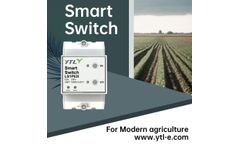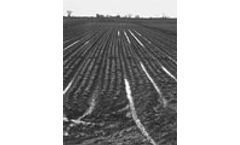Irrigation Soil Moisture Articles & Analysis
12 articles found
Improve agricultural production efficiencyIn traditional agricultural production, farmers need to manually control the switches of irrigation, ventilation, lighting, and other equipment, which is not only time-consuming and labor-intensive, but also inefficient. ...
Soil moisture refers to the amount of water held in the soil matrix. It is typically expressed as a percentage or a volumetric ratio, representing the volume of water per unit volume of soil. Soil moisture levels fluctuate significantly over time and space, influenced by factors such as rainfall, ...
As the demand for freshstrawberries has increased over the years, so have the costs of producing theseberries. Due to this increase in demand and expense, many strawberry growershave begun looking at different strategies for growing strawberries more ...
On-farm weather stations and soil moisture probes take the guesswork out of seeding plans and execution As the 2023 seeding season is fast approaching, why not end the soil moisture guessing game on your farm? Especially when you have technology available to inform weather-related planning and crop management decisions. Precision crop management tools, including on-farm weather stations and soil ...
As viticulturists and grape growers know, understanding current and future soil moisture content is a prerequisite for taking actions to reduce crop variability, optimise water usage, and tackle irrigation problems. ...
The need for efficiency is also growing with the increased frequency of extreme weather events (e.g. extreme heat, fluctuating rainfall, bushfires and droughts), which effect vine growth and fruit development. Dynamic irrigation scheduling (based on crop need, soil moisture and weather) optimises irrigation application to ensure ...
One of the challenges was that during the course of the demonstration itself, the farmers would begin to schedule irrigation on the control field using techniques and technologies they observed us using on the IWM field, like soil-moisture sensors. ...
As farm operations have grown and their monitoring needs have evolved over the years, Briggs and Eggers Orchards have continued to add more field stations and sensors to their flexible network. To help with irrigation scheduling, soil moisture monitoring components were integrated into the network to give managers valuable information into how ...
Agriculture Irrigation of crops represents 90% of the water used worldwide. Monitoring soil moisture in the root zone of crops will optimize irrigation. ...
.� The large wireless networks enabled by the data radio provide previously unavailable information to users in a wide range of industries. In Irrigation, soil moisture can be measured, zone valves can be operated and flow rate measured. ...
This study was performed to investigate the horizontal and vertical distribution of soil moisture and salinity using an alternative trickle irrigation system of drip tape. Four main treatments consisting of 100, 80, 70, and 60% of the plants’ water requirements and three sub-treatments of 2.1, 4.6, and 10.2 dS/m, were conducted. ...
The water requirements of crops are dependent on evapotranspiration (ET), soil chemistry, and the crop’s maximum allowable depletion (MAD). Direct measurements of root zone soil moisture, water application along with published ET values and soil textures, can be used in a soil water balance model that can ...










